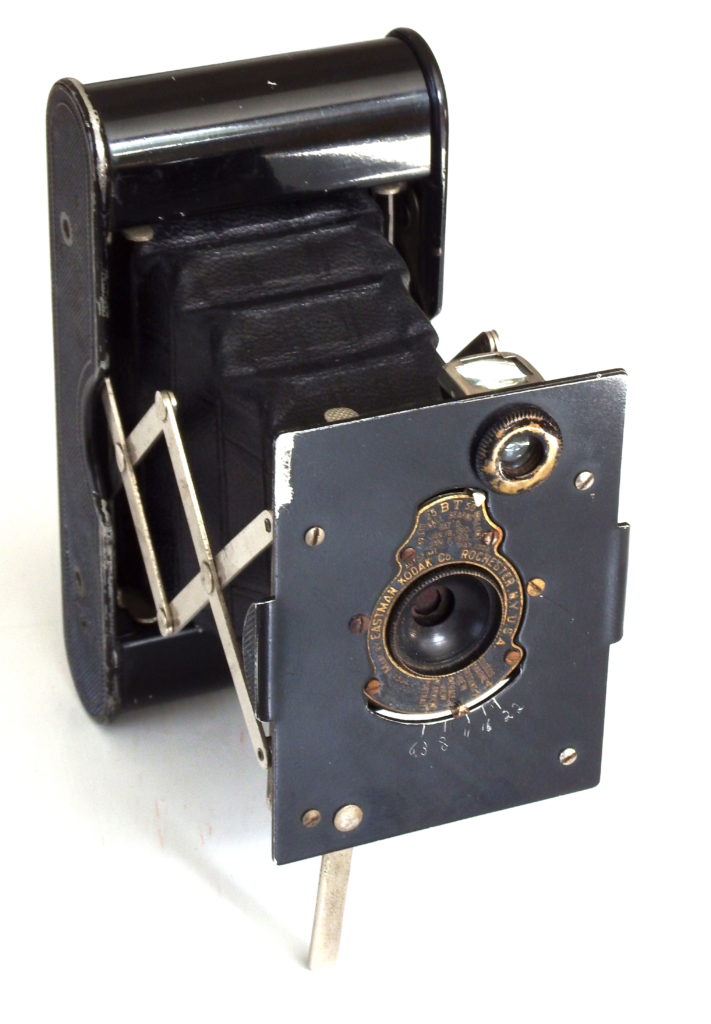
OK I must start with a confession. My specimen of this camera is not exactly 100 years old, it is from around 1920-25. But the model of camera is actually more than a hundred years old.
I was writing a book about The Himalayas containing stories from my own expeditions to some of The Worlds highest mountains with flashbacks to the first explorations and ascents of these mountains one of which was Mount Everest.
On the third expedition to Mount Everest which took place in 1924 climbers Mallory and Irvine disappeared high on the mountain. Mallory was found as late as 1999 but Irvine has not been found though he might have been spotted by a chinese climber long ago.
Mallory and Irvine carried a Kodak Vest Pocket Autographic camera, which was not found on Mallorys body, and probably he didn’t carry the camera as he was known to be quite helpless with a camera. Therefore hopes are that Irvine one day will be found and the camera with him. There is a fair chance that the exposed films might have survived in the huge deep freezer of Mount Everest, though it is not for certain. But the images might show what the two climber achieved. The question is: Did they reach the summit of Mount Everest in 1924?
In my opinion it won’t change the fact that Hillary and Tenzing made the first ascent of Mount Everest, as an ascent of a mountain isn’t accomplished before you by own force reach the basecamp. And as Mallory and Irvine didn’t survive they can’t have made the first ascent, but they might have stood on The Roof of The World already in 1924. And that is fascinating.
Now you know why I as a mountaineer through more than 40 years had to own a specimen of the camera that might one day document if men stod on the summit of Everest as early as 1924. No more about mountaineering, now to a description and test of the camera.
Kodak Vest Pocket cameras was produced between 1912 and 1935. It came in several different models:
- First model produced between 1912 and 1914 was the original Kodak Vest Pocket that had a simpel meniscus lens limited to apertures from 6.8 to 11.
- The next model was the very popular Autographic model produced between 1915 and 1926. This model has a small window on the back enabling you to make notes on the back of the film. This model has a more wide variety of aperture ranging from 6.3 to 22 and a rectilinear lens. This is the model of which I own a specimen.
- Next in line was a “model” that actually were several as this Autographic Special model could be had with several different lenses of which especially the Zeis Tessar f4.9 was desired. It was like the normal autographic produced between 1915 and 1926.
- Last in line is the model B that was a quite different camera with a folding bed, different shutter mechanics and also sold under other names. I don’t regard this as a true member of the Vest Pocket family. It was produced between 1925 and 1934.
Common to all models is a very compact design that makes it pocketable when collapsed thus the name Vest Pocket. You can actually have in a pocket. It has a bellows that is quite durable, my around 100 years old camera doesn’t have a single hole in it, therefore I experience no light leaks. The image below shows the sleak design measuring only 12.2 x 6.2 x 2.5 cm when collapsed.
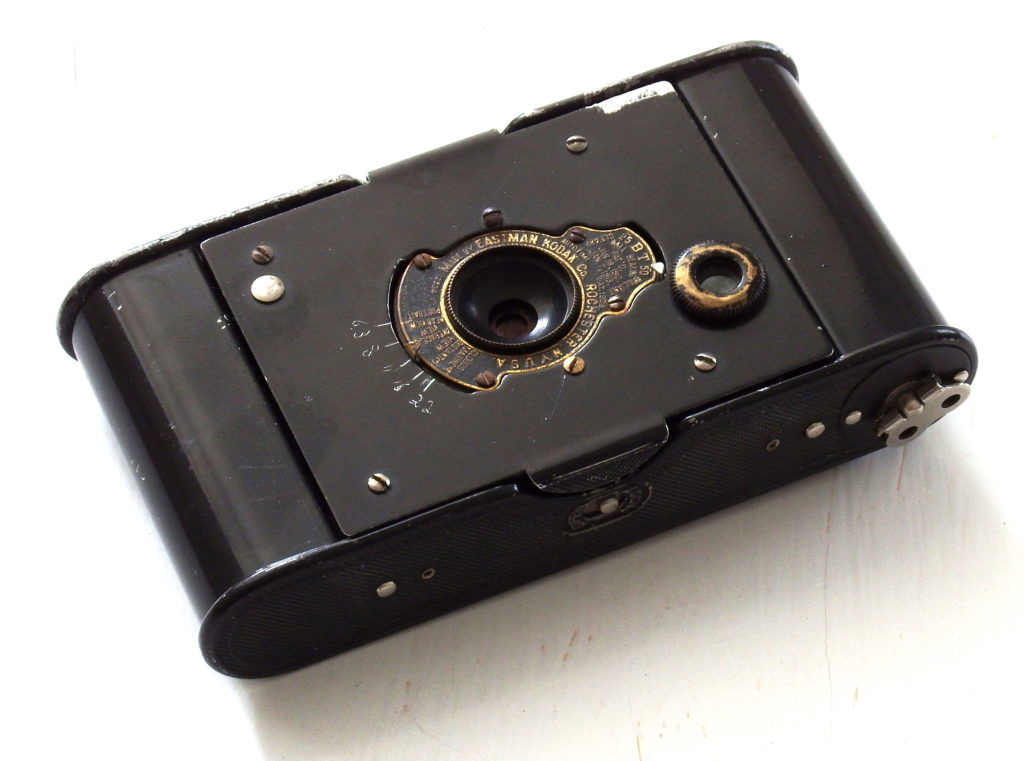
The front contains levers for adjusting shutter time and aperture. The shutter times for all models is 1/25, 1/50, B and T making it necessary to hold the camera quite still in order to avoid camera shake in the image. There is no tripod socket but there is a pin that can support the camera on a level surface.
The second window on the front is the viewing window. It is a small angular piece of glass that becomes visible once the camera is opened. It shows a rough estimate of what is in the frame and it can be switched between portrait mode (default) and landscape. In the latter position the camera can’t be collapsed.
Once opened you also gain access to the shutter release. Again there is not much help for longer shutter times (B and T) as there is no socket for a cable release.
The top of the camera comes of in order to load film, which actually not very easy to do. I wonder how Mallory and Irvine managed this in the cold on Mount Everest i 1924. I find it a bit difficult doing it in the comfort of my office.
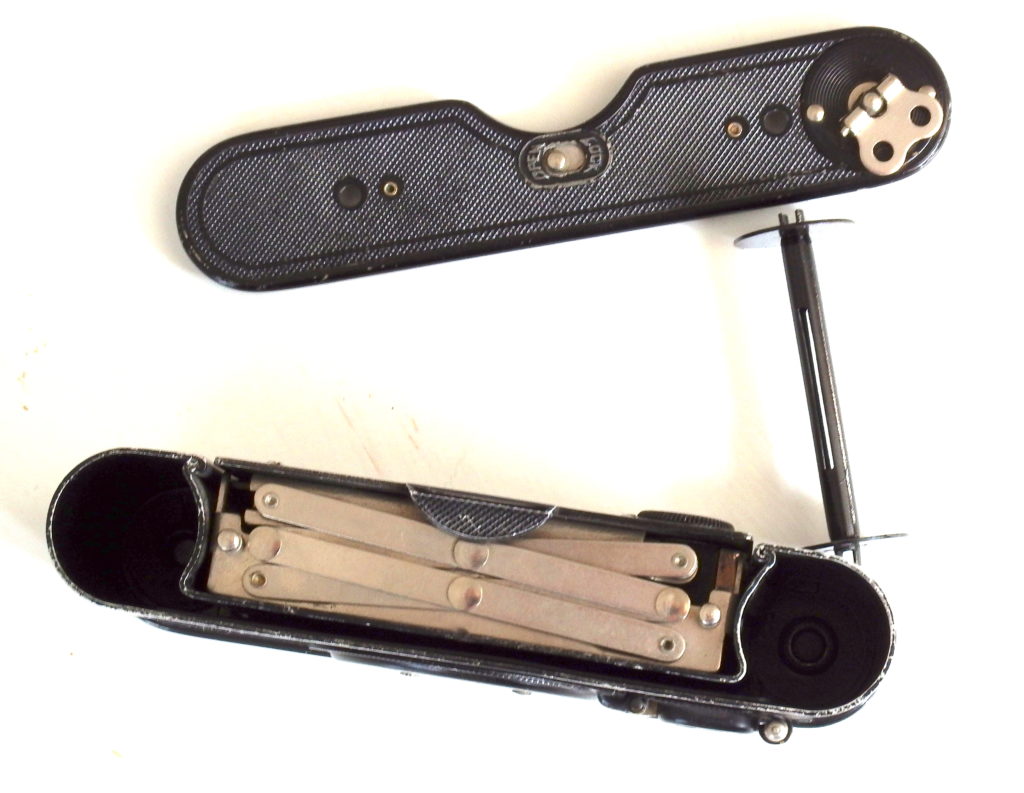
The camera takes 127 film that is hard to get these days. Actually, there is one company producing 127 film and selling them at astronomical prices. I haven’t tried these but favored for the first trials to use cut down backing paper from a used 120 film together with a piece of 35 mm film attached to it. The 35 mm film is almost the width of the 127 (45 mm) if you expose the sprockets as well. Therefore, my first test shots includes sprockets, though I have left them out in some of my scans.
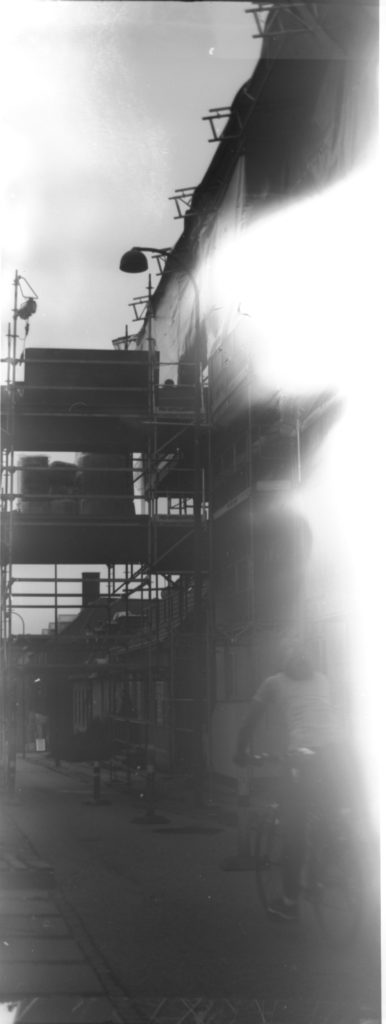
As is clearly visible from the first film I shot, there has been a massive light leak, but I supposed it wasn’t from the camera, which proved to be true. It appeared to come from light leaking into the spool onto which I had spun the 35 mm film. That film has a thicker base than the 120 and the layers are therefore more widely apart and thus causing light to enter between the layers.
Even with light leaks I managed to produce some interesting images. Below is a double exposure with one of them being a pan following a bypassing car.
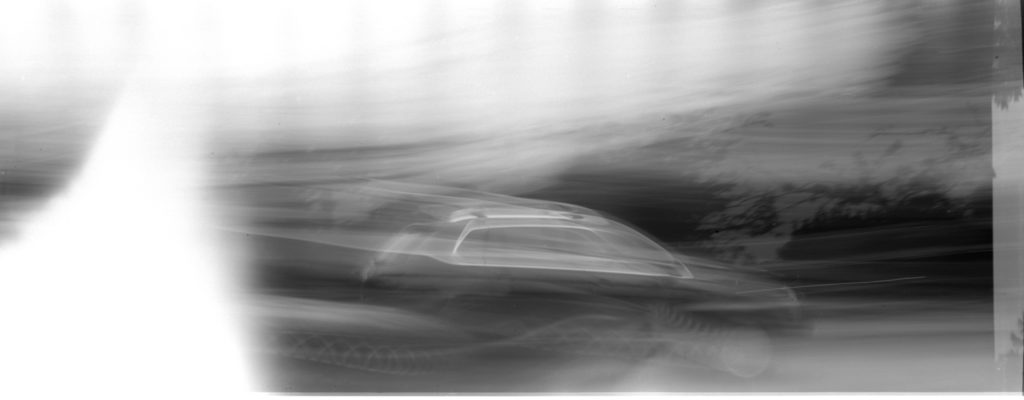
The next test was done with same type of film but this time the whole process of layering the 35 mm film onto the backing paper and inserting the prepared roll into the camera was done inside my changing bag. And behold, no light leaks and as a result of that also much better contrast in the images.
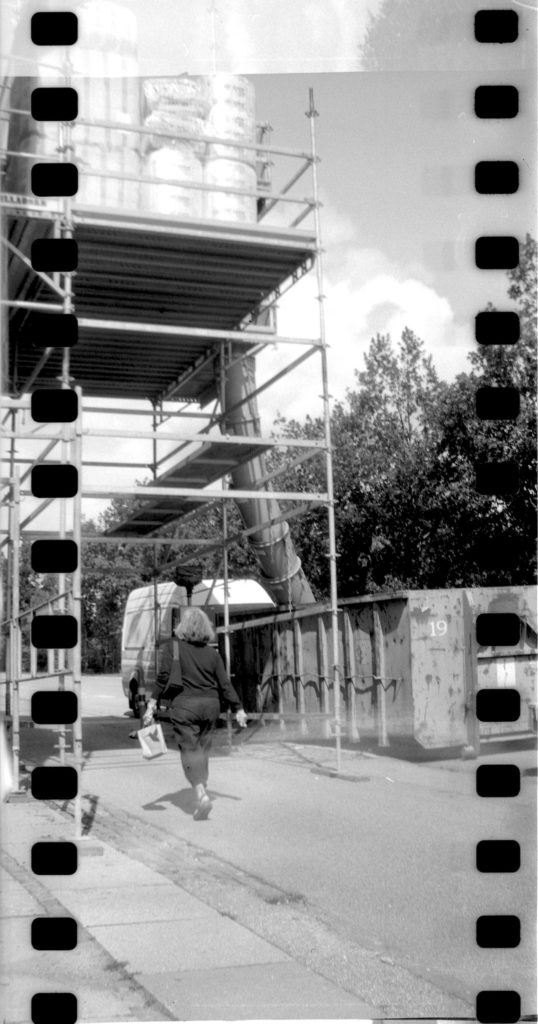
Quite decent image quality the age of the camera taken into account, right?
But another fact becomes obvious. Images on 6×6 cameras are not 60 mm by 60 mm but the images of the 127 film is 60 mm on the long end. As I was using the numbers of the 120 backing paper to advance my film the result was overlapping images. You can se part of the next image in the upper part of the above image. If I continue to utilize this method I will have to make my own numbers and spacing between images on the backing paper to avoid these overlaps. Recently I have bought some old 127 film on eBay, but yet I haven’t received them. I will be back with an update as soon as I have tested on the proper film for this camera – although film expired around 1970, but that isn’t anything out of the ordinary for me. I use that kind of film on a daily basis 🙂
Another fact that became apparent was that I was often not able to hold the camera steady enough on the 1/50 second exposure time. You can see the obvious camera shake in the image below, and this is quite strange as I am often able to hold cameras steady at 1/15 of a second. The construction of the shutter mechanism is unfortunately the cause of this.
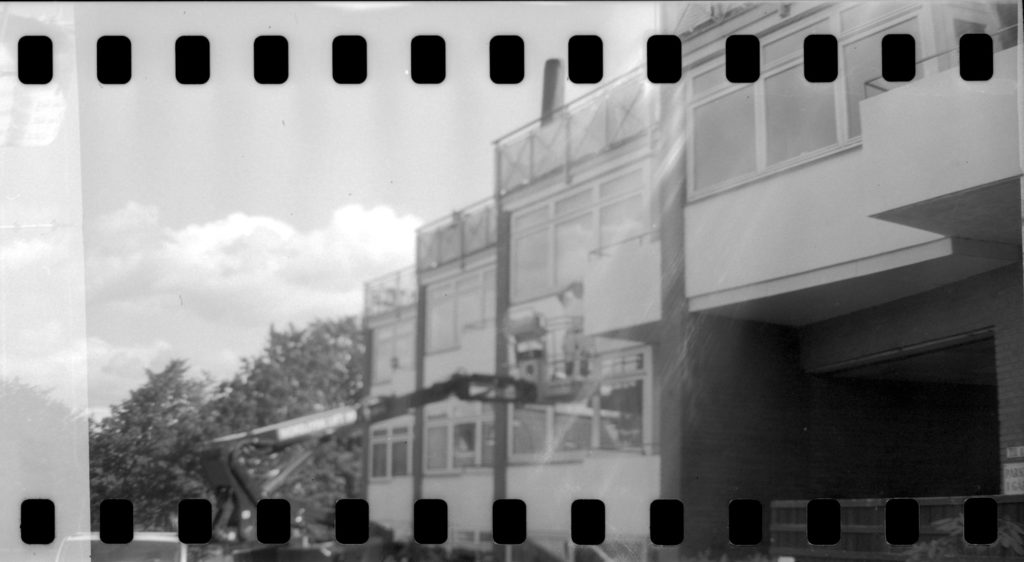
Another issue with this camera is that there is no way to focus. It’s a fix-focus camera, and you even have to extend the bellows all the way to even focus on infinity. From what I have read it is supposed to be sharp from around 2 meters, but at what aperture? My own test and the image below shot at an aperture of 11 shows that it’s definitely not sharp close up at this aperture. The small three in the image is around 2 meters distant and is definitely very soft compared to the more distant background.
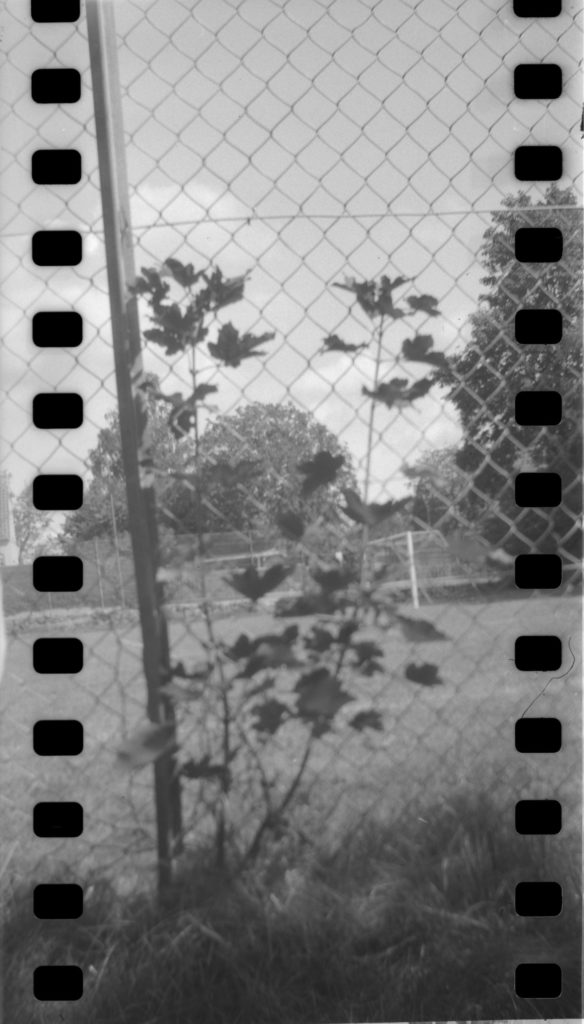
As a conclusion to this I must say that I’m surprised of the image quality that is achievable with this old and simple camera. At the same time I have seen the challenges the construction poses and now I must admire the 1924 expedition to Mount Everest even more for the images that they brought home. Furthermore, now I really hope that Irvine and his camera will be found some day and someone will be able to develop the film in order to show some results that might tell us the full story of the two unfortunate mountaineers.
I would like to be the person to find him, or it would be fortunate if I was around when another person returned with the film. Having experimented hugely through many years with old expired film, I could be one of the most experienced persons in the world to bring about useful results. I haven’t developed film this old, but I experiment regularly with film expired around 1960. And I have with nice results developed film from very old cameras found on thrift stores, some of which have been up 70 years old.